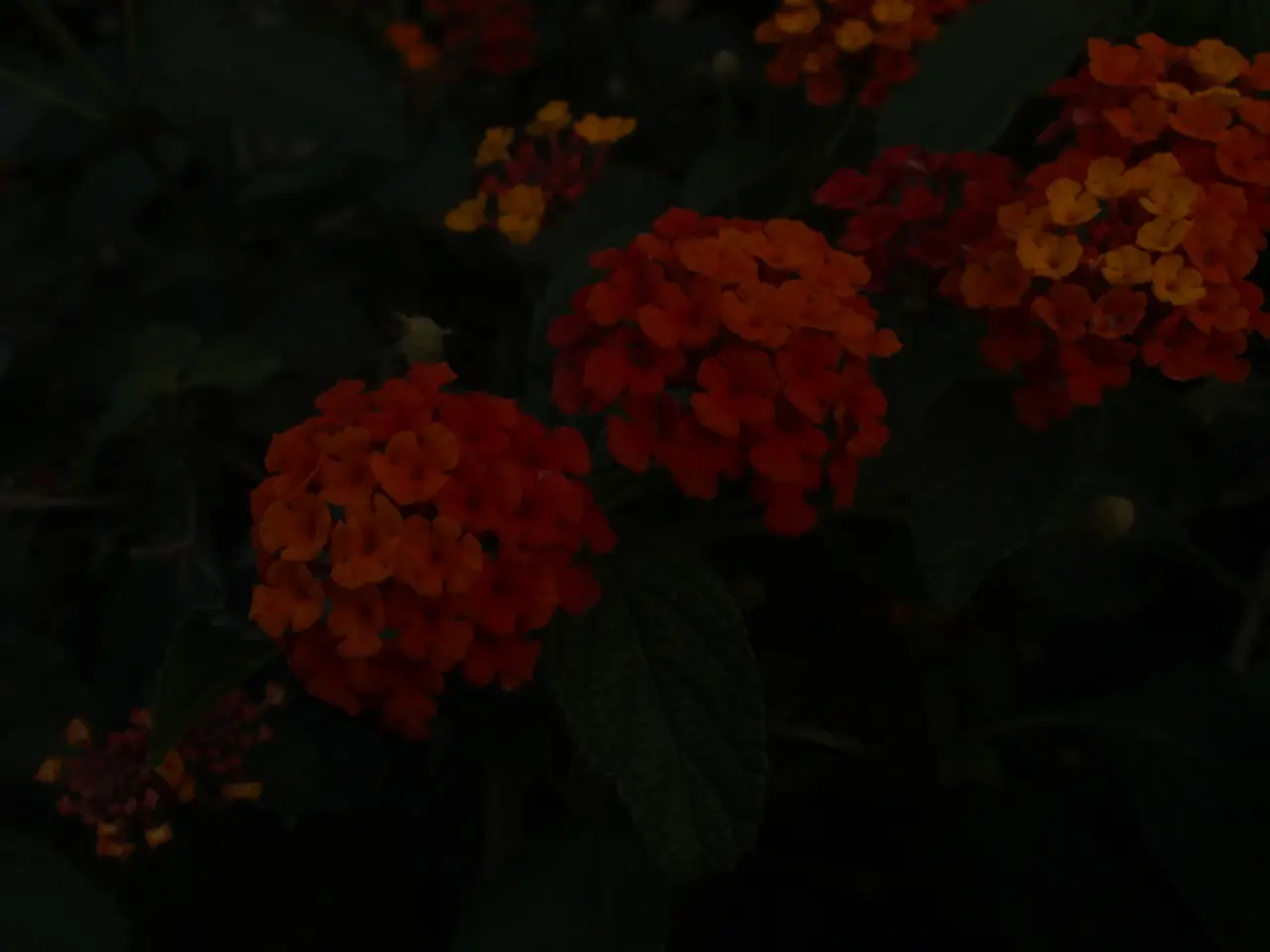Gardening Practice for Blossoming and Fruit-Bearing Bonsai: Techniques for Abundant Blooms and Harvests
Flowering and fruiting bonsai trees are a delightful spectacle, transforming miniature trees into living, breathing works of art. To coax forth the full beauty of these miniature trees, understanding their needs and the factors that regulate fruit production and size is crucial.
Understanding Species-Specific Needs
Different bonsai species have distinct temperature tolerances, light preferences, and watering needs. For example, dwarf pomegranate bonsai tolerate brief dips to about 40°F (4°C) but should be protected from prolonged frost; a mild cool winter period can actually improve flowering and fruiting [4]. Dwarf black olive bonsai need full sun but may require afternoon shade in hot climates and keep above 45–50°F, with no frost tolerance [2]. Sumac bonsai grow best outdoors with bright, indirect light and good air circulation [1].
Climate-Appropriate Location
Positioning bonsai to provide optimal sunlight without causing leaf scorch is vital. Tropical or subtropical bonsais like Ficus ginseng thrive in bright, indirect light and temperatures between 60°F and 75°F [3]. In colder climates, frost-sensitive bonsais benefit from indoor overwintering in bright, cool areas such as greenhouses or near south-facing windows [4].
Soil and Drainage
Using well-draining bonsai soil mixtures tailored to promote oxygen and moisture balance in roots is essential. A common mix includes equal parts of coir, granite chips (such as turkey grit), and coarse perlite, with a pH around 6.2 to 6.5 for most species [5]. Avoid compacting materials like peat moss or natural loam that can harbor pests or restrict drainage [5].
Watering
Maintaining consistent moisture without waterlogging is key. Tropical species may require daily watering during hot periods, while younger trees might need less frequent watering [2]. Proper watering supports fine feeder root development critical for healthy growth.
Pruning and Training
Regular pruning stimulates healthy growth and desired form shaping. For flowering and fruiting bonsai, pruning to thin the canopy and remove dead or inward-growing branches improves air circulation and light penetration, enhancing flower and fruit production [1][3]. Wiring can shape branches but should be carefully monitored to avoid bark damage [1].
Fertilizing
Feeding bonsai with balanced fertilizers during active growth seasons (spring to fall), typically every two weeks for species like dwarf black olive [2], while avoiding fertilizing soon after repotting, is important. Organic supplements in mid-spring can enrich soil microorganisms important for nutrient uptake.
Protection from Extremes
Providing shade during peak heat to prevent leaf stress and adequate humidity when needed, especially in dry indoor environments, is essential. For cold-sensitive bonsai, avoid prolonged exposure to freezing temperatures and consider protective measures such as indoor relocation or greenhouse use [4].
Seasonal Care and Maintenance
Seasonal care and maintenance strategies are essential to guarantee flowering and fruiting bonsai thrive, from spring to winter. During spring, focus on pruning and training to direct energy towards blooming and fruiting; summer demands vigilant watering and fertilization to support rapid growth; autumn reduces watering and fertilization to promote fruit ripening and prepare for dormancy; winter is a time for pruning, protection from harsh elements, and introspection.
By embracing the dynamic interplay of seasonal care, one creates a kaleidoscope of colors, scents, and textures, transforming the bonsai into vibrant, thriving oases of life. Attuning oneself to the subtle rhythms of nature and adapting one's approach to meet the unique needs of each season creates a harmonious balance that nurtures the trees.
Asymmetrical branch structure, foliage density and texture, and pot selection harmonize to create a mesmerizing display that showcases the beauty of flowering and fruiting bonsai. With careful attention to their needs and the factors that regulate fruit production and size, you can cultivate a thriving bonsai garden that delights the senses and inspires awe.
Gardening and maintaining a home-and-garden bonsai garden requires an in-depth understanding of species-specific needs, such as temperature tolerances, light preferences, and watering requirements. For instance, dwarf pomegranate bonsai can benefit from a mild cool winter period to enhance flowering and fruiting [4]. Furthermore, careful pruning and training can stimulate healthy growth and improve flower and fruit production, especially by thinning the canopy and promoting air circulation [1][3].




